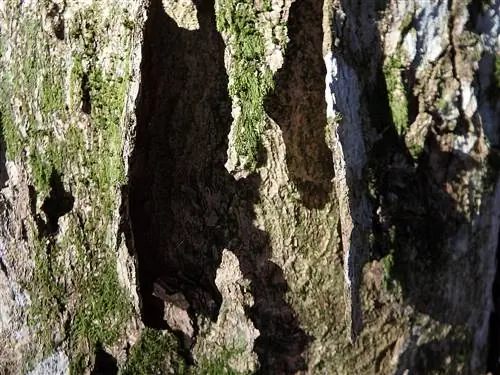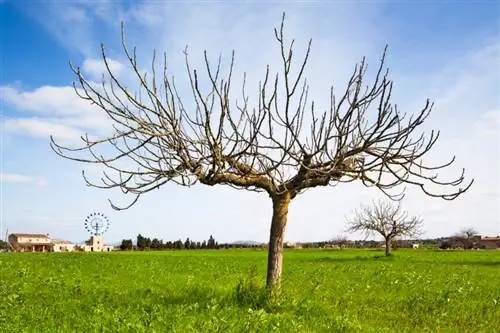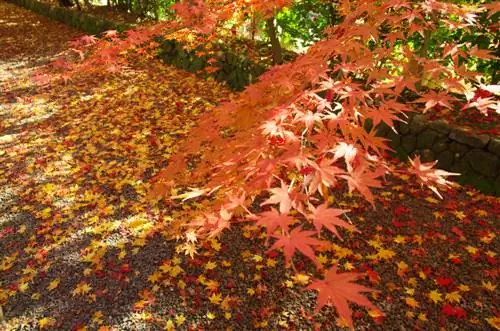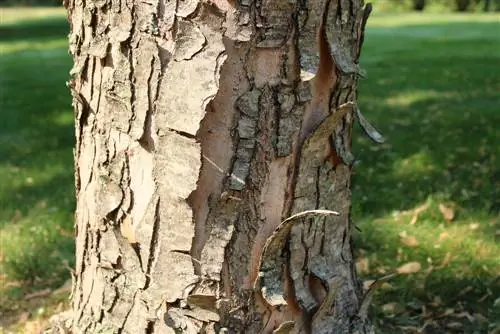- Author admin [email protected].
- Public 2023-12-16 16:46.
- Last modified 2025-06-01 06:02.
A maple tree is just as unable to survive without its bark as a human being is without its skin. If the tree loses its bark, immediately start looking for the cause. You can read about the most common triggers for the problem with tips on how to proceed correctly here.
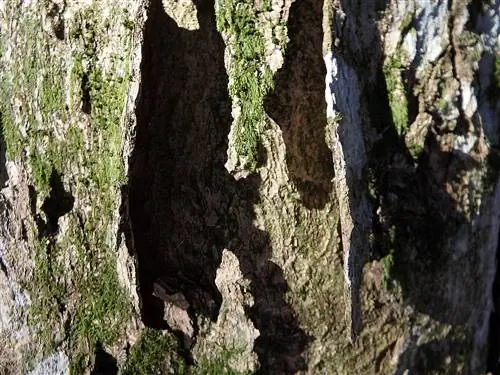
Why does a maple lose its bark and what can you do about it?
If a maple tree loses its bark, the cause can be sooty bark disease, frost or deer browsing. To save the tree, you should smooth the affected tissue, treat it with wound closure or cover it with moist clay and use black foil.
Sooty bark disease - danger to people and maple trees
Parallel to global warming, a fungal disease is spreading on maple trees in Germany, the typical symptom of which is peeling bark. The species commonly affected are sycamore maple (Acer pseudoplatanus), Norway maple (Acer platanoides) and field maple (Acer campestre). Fatally, the spores of the pathogen Cryptostroma corticale are also a he alth threat to people, especially if they are already susceptible to allergies. You can recognize sooty bark disease by these signs:
- Early stage: bark deformation, slime flow spots on the trunk, wilted leaves, leaf fall
- Following: extensive loss of bark makes black, soot-like coating visible
- High spore production turns the environment black
If people breathe in the flying spores, inflammation of the alveoli can occur. Infected maple trees should therefore be cleared immediately by professionals wearing protective equipment.
Cold frost causes the bark to burst - tips for solving problems
A winter hardiness of up to -40 degrees Celsius does not prevent maple trees from losing their bark when there is frost. The combination of dry cold and intense sunlight tugs at the bark tissue until it tears. Use the following options to help the tree heal chipped bark:
- Smooth the damaged area with a sharp knife and apply wound closure
- Alternatively, cover the exposed cambium with a thick layer of moist clay
- Protect the wound with black foil until it is covered with fresh bark
As a preventive measure, place wooden boards in front of the maple trunk in winter or cover the bark with reed mats. The recommended procedure has also proven to be effective when the bark has been lost due to browsing by wild animals.
Tip
Home gardeners and foresters use the life-threatening consequences of bark loss to destroy a maple with potential for danger. When ringing, a 5 to 10 cm wide strip of bark is removed from the lower trunk area and the cambium underneath is brushed off. Within 12 to 36 months the tree collapses and dies.

